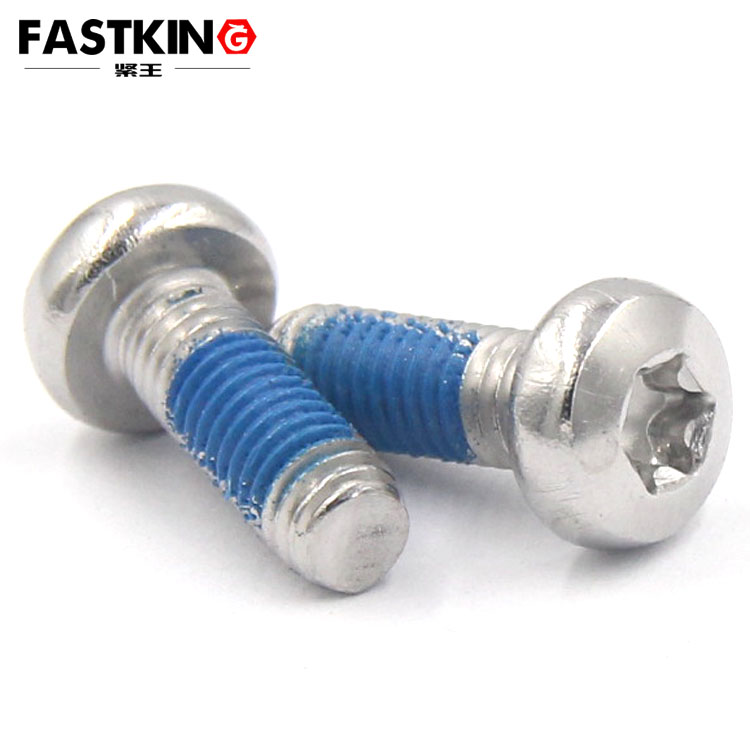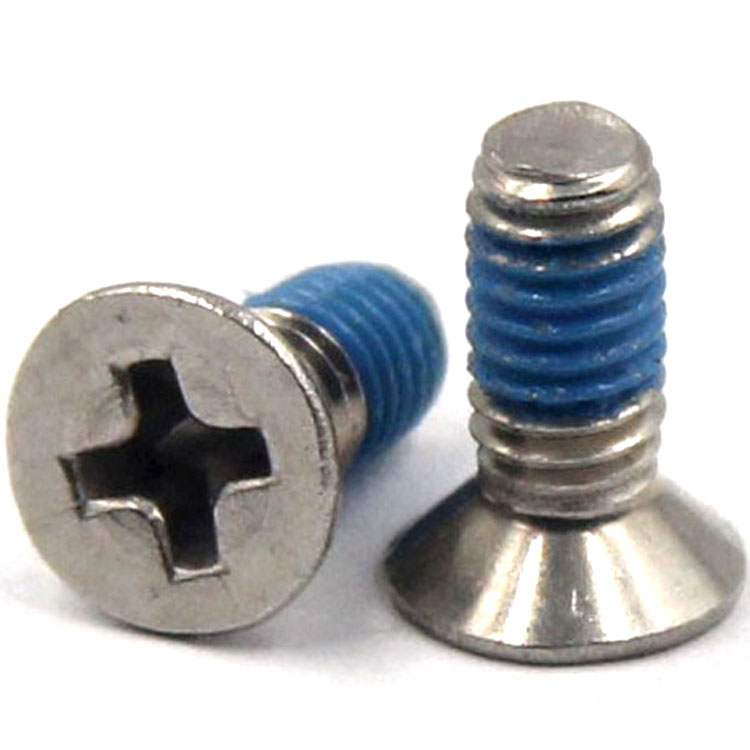The "pan head Torx socket" structural design is what sets it apart from ordinary screws:
-
Pan Head Design: Unlike countersunk head screws, the pan head (rounded head) eliminates the need for pre-drilling countersinks on the connected component’s surface. This not only reduces processing damage to the base material but also prevents sharp edges from scratching operators or cables—making it particularly ideal for scenarios with high safety requirements, such as medical devices and children’s products.
-
Torx Socket (Internal Hexagonal Star) Groove: The hexagonal star-shaped recess enables multi-point contact with tools. Compared to traditional slotted or cross-slot designs, the Torx socket structure boosts torque transmission efficiency by over 30%, minimizing "cam-out" (slippage between the tool and screw head) during tightening. It is fully compatible with electric screwdrivers on automated assembly lines, ensuring uniform preload across every screw.
"Stainless steel" is the core guarantee for this screw’s weather resistance and durability. Mainstream M5 pan head Torx socket stainless steel thread-locking screws on the market primarily use 304 stainless steel (with 316 stainless steel reserved for high-demand scenarios):
-
304 Stainless Steel: Composed of 18% chromium and 8% nickel, it offers excellent corrosion resistance. In humid environments (e.g., bathroom appliances, kitchen equipment), it resists rust effectively, with a corrosion resistance period of 72-120 hours in neutral salt spray tests. Additionally, 304 stainless steel has a tensile strength of up to 515MPa and a yield strength of ≥205MPa—meeting the strength requirements of M5 screws under regular loads and preventing thread deformation or breakage due to insufficient material strength.
-
316 Stainless Steel (for Special Environments): For coastal high-salt-fog areas or light chemical corrosion environments, versions made of 316 stainless steel (containing 2-3% molybdenum) enhance corrosion resistance by 2-3 times, further extending the screw’s service life.

Thread-locking design is the core advantage of this screw, with two mainstream technical approaches currently in use:
A layer of anaerobic thread-locking adhesive is uniformly applied to the screw’s thread surface. When unassembled, the adhesive remains in a stable liquid state, posing no impact on storage or transportation. Once the screw is screwed into an internal threaded hole, air in the thread gap is expelled, and the adhesive cures rapidly in an anaerobic environment to form a high-strength bonding layer. This layer firmly "locks" the screw to the base material—after curing, it can resist a reverse torque of 10-15N·m, effectively offsetting loosening risks caused by vibration. In scenarios with dynamic loads (e.g., small fans, water pumps), the loosening rate is only 1/10 that of ordinary screws.
1-2 tiny protrusions are pressed onto the thread surface. During assembly, these protrusions embed into the side of the internal thread, creating mechanical engagement resistance. This physical anti-loosening method does not rely on adhesives, making it suitable for high-temperature environments (e.g., oven accessories, with short-term heat resistance up to 200℃). It also allows 2-3 cycles of disassembly and reinstallation, facilitating later maintenance.
The properties of M5 pan head Torx socket stainless steel thread-locking screws precisely align with requirements across multiple fields:
-
Electronic Equipment: For fixing smartphone motherboard brackets or router antennas, the M5 specification matches the mounting hole size of precision components; the pan head design avoids damaging circuit board copper foil; stainless steel prevents rust from solder splatter; and the thread-locking adhesive resists vibration during equipment transportation, ensuring no component displacement.
-
Medical Devices: In devices like blood glucose meters and small diagnostic instruments, the Torx socket’s tamper-resistant feature (requiring a dedicated Torx wrench for disassembly) prevents unauthorized dismantling by non-professionals. The biocompatibility of 304 stainless steel meets medical device hygiene standards, while the thread-locking design ensures no component loosening during frequent movement and use.
-
Smart Home Appliances: For motor brackets in smart door locks or wheel assembly connections in robotic vacuum cleaners, the M5 screw’s strength withstands daily vibration; stainless steel resists water damage during cleaning; and the pan head Torx socket structure supports automated assembly, boosting production efficiency.
-
Tool Compatibility: Use a Torx wrench or bit of matching specification (typically T10-T15 for M5 screws) to avoid damaging the groove due to mismatched tool sizes.
-
Torque Control: The recommended tightening torque for M5 304 stainless steel screws is 2.5-4N·m. Over-tightening may cause thread stripping, while insufficient torque fails to maximize anti-loosening effects. A torque wrench is recommended for precise control.
-
Environment Adaptation: Ordinary 304 stainless steel versions are not suitable for strong acid or alkaline environments. In such cases, replace with 316 stainless steel screws and pair them with thread-locking adhesive for enhanced protection, ensuring long-term reliability.
As a "specialized tool" in precision fastening, M5 pan head Torx socket stainless steel thread-locking screws integrate precise specifications, structural adaptability, material weather resistance, and thread-locking reliability. It addresses the pain points of traditional screws—"easy loosening, easy rusting, difficult assembly"—while meeting the demand for "small, refined, stable, and durable" fasteners in precision manufacturing. With the trend toward miniaturization of electronic devices and high-end medical equipment, this screw is expected to deliver greater value in more precision scenarios, serving as an "invisible guardian" for product quality and operational safety.



